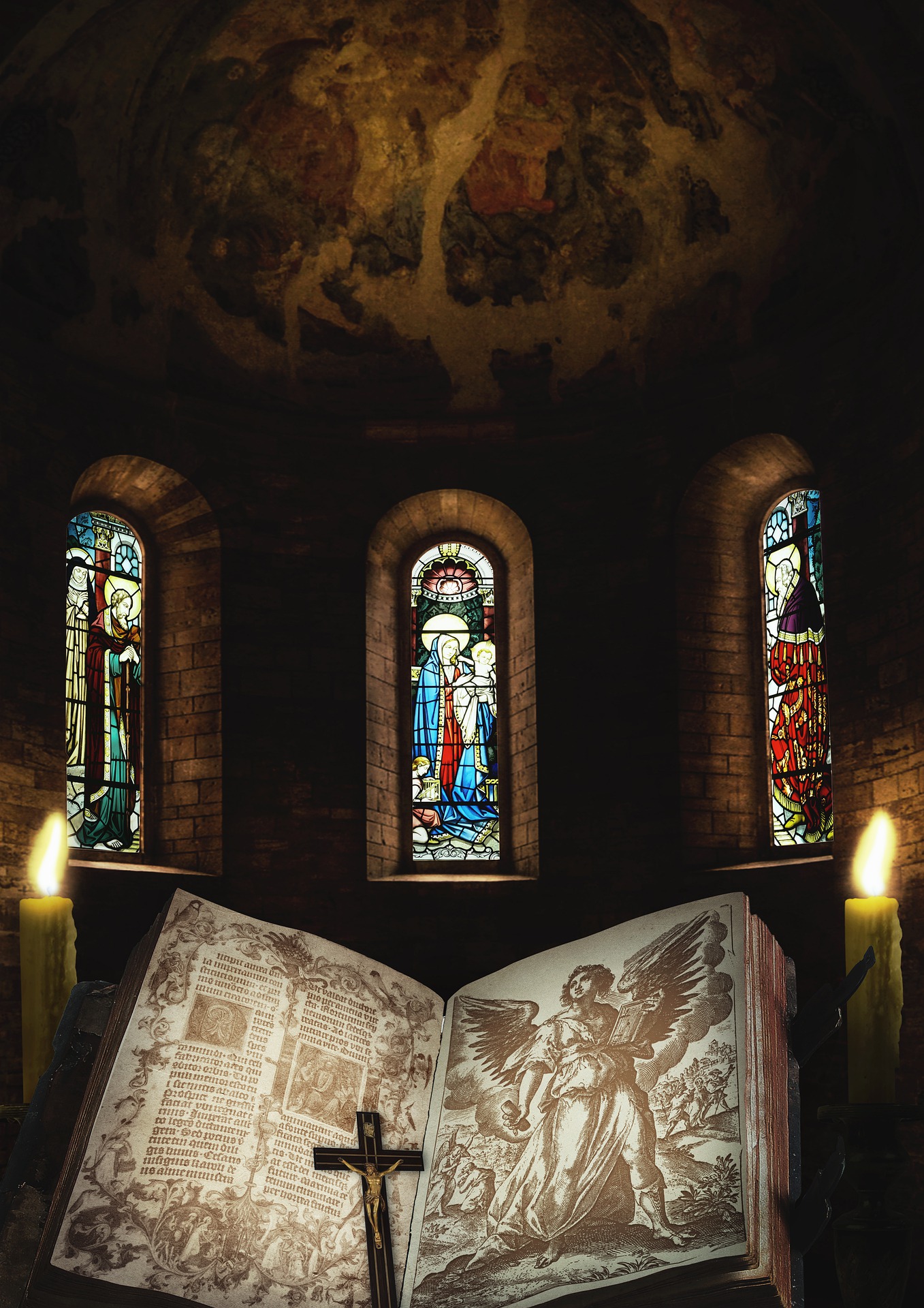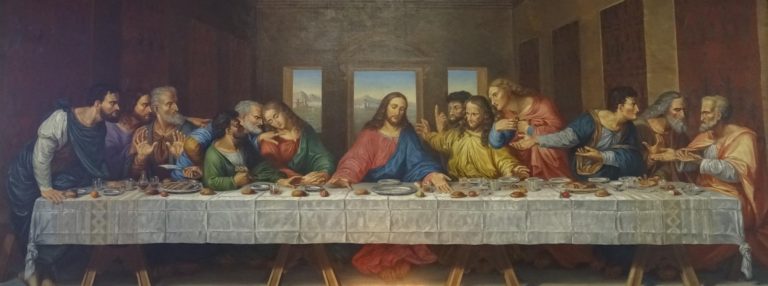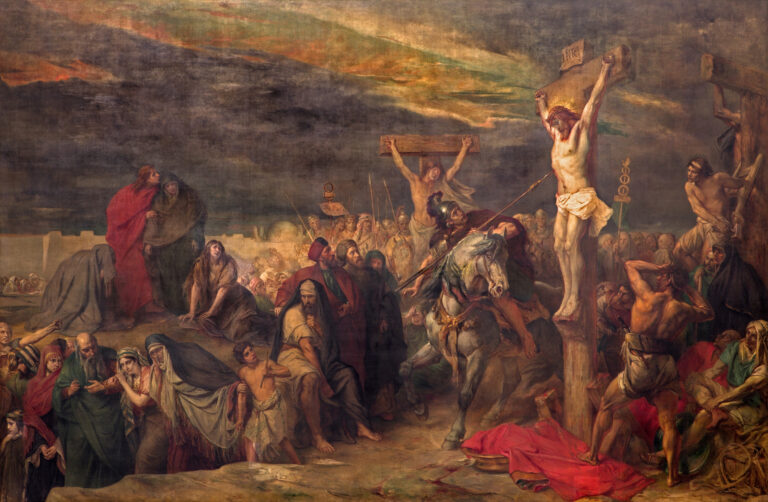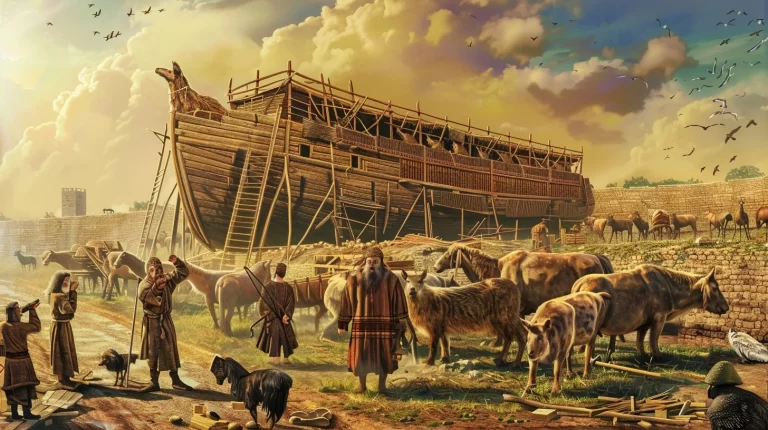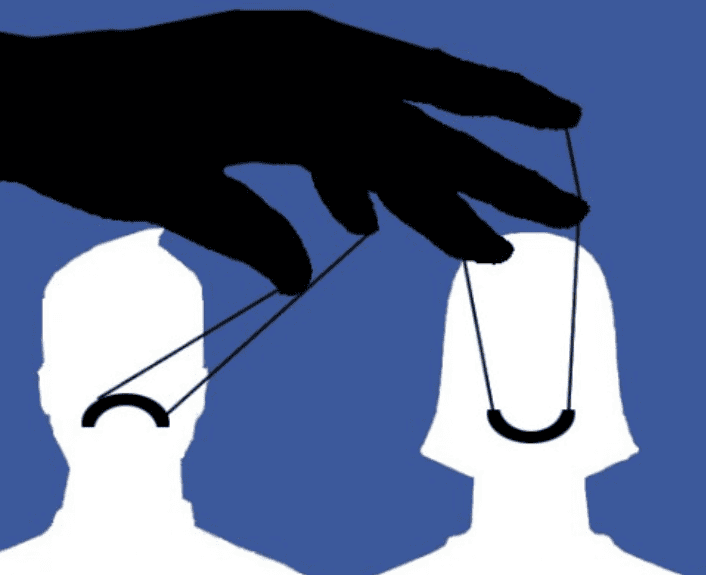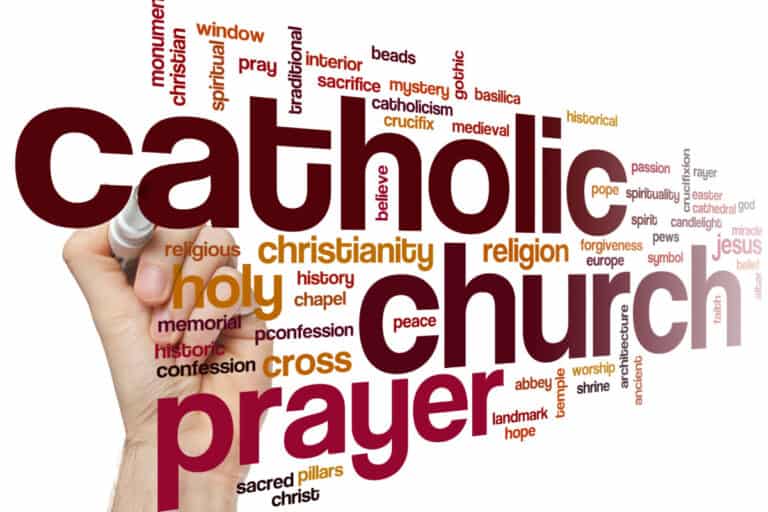What are the key differences between Catholic vs Christian?
Many people are surprised to learn about the differences between Catholic and Christian beliefs, especially considering that Catholics constitute over half of the Christian population worldwide. Of the approximately 2.5 billion Christians throughout the world, about 1.3 billion identify as Roman Catholics. This statistical reality reveals an important truth: all Catholics are Christians, but not all Christians are Catholic.
What distinguishes Catholic beliefs from those of other Christian denominations?
The differences extend far beyond mere tradition or practice. Catholics adhere to both Sacred Scripture and Sacred Tradition as authoritative, while most Protestant Christians follow the principle of Sola Scriptura (Scripture alone). Furthermore, the Catholic Bible contains 73 books compared to the 66 books found in Protestant Bibles.
Perhaps the most significant theological divide between Catholic and Christian Protestant beliefs centers on salvation. Catholics understand salvation as an ongoing process involving both faith and works, particularly through the sacraments. Protestant denominations, by contrast, typically view salvation as a one-time event accomplished through faith alone.
Understanding these distinctions helps clarify many misconceptions about both traditions.
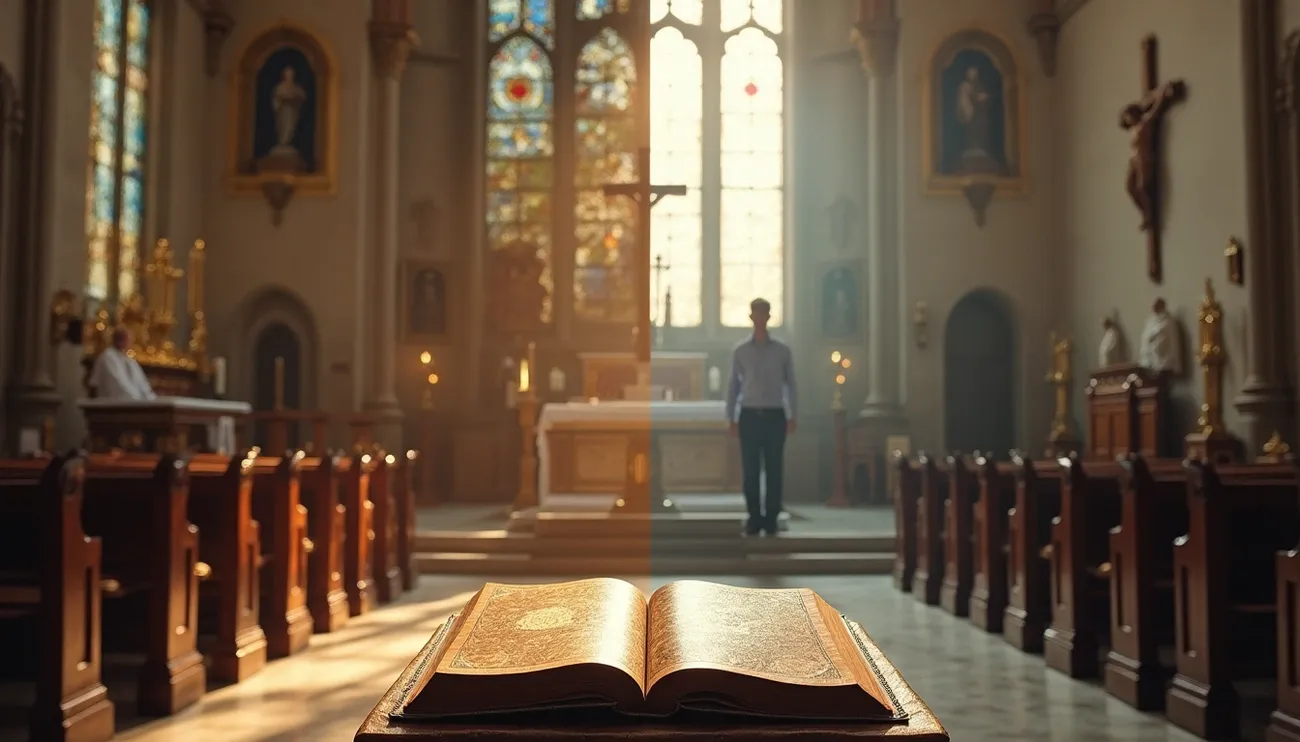
How do Catholics and other Christians differ in their approach to church authority?
Catholics believe in Apostolic succession, recognizing the Pope as the direct successor to St. Peter, while most Protestant denominations reject this hierarchical structure. Additionally, Catholics venerate saints and seek their intercession, practices that many Protestants find problematic or unbiblical.
From the doctrine of the Eucharist to the teaching on Purgatory, these theological differences reflect centuries of distinct interpretations of the Christian faith. Let us examine these differences with charity and understanding, recognizing that despite these distinctions, we share faith in the same Lord Jesus Christ.
1. Definition: Are Catholics Christians?
The question “Are Catholics Christians?” often creates confusion among many faithful and those learning about Christianity. Let us be clear on this fundamental point: all Catholics are Christians, but not all Christians are Catholic. This distinction is essential for understanding the broader landscape of Christianity in our world today.
Roman Catholicism stands as the largest branch of Christianity, with approximately 1.27 to 1.41 billion baptized Catholics worldwide as of 2025. This represents roughly half of the estimated 2.5 billion Christians globally. These numbers alone highlight the significant position Catholicism holds within the Christian faith.
What does history tell us about this relationship?
For almost a millennium, Catholicism and Christianity were virtually inseparable. The Catholic Church maintains that it is “the one, holy, catholic and apostolic church founded by Jesus Christ.” According to Catholic doctrine, Catholicism is not merely a type of Christianity but rather the original Christian Church itself. This perspective sees other denominations as branches that separated from this original foundation.
The religious landscape changed dramatically during the 16th century when the Protestant Reformation divided the church into Catholic and Protestant denominations. Since then, Christianity has developed into several main branches: Catholicism, Orthodoxy, and various Protestant denominations.
Despite these divisions, Catholics share core Christian beliefs with other denominations. These include:
Belief in the divinity of Jesus Christ
Faith in Jesus as the Son of God who came to redeem humanity
Trust in God’s promise of eternal life
Following the teachings found in the New Testament
Why does confusion persist?
In certain contexts, particularly in predominantly Protestant regions, people might incorrectly use “Christian” to refer exclusively to Protestant Christians, thereby creating an artificial separation between Christians and Catholics.
Furthermore, misunderstandings arise when examining theological differences. For instance, certain Catholics may emphasize confession and sacraments as necessary components of salvation—a view many Protestants find problematic. However, these differences in practice and interpretation do not negate the fundamental Christian identity of Catholics.
Throughout this article, we will explore the specific theological and practical differences between Catholic Christianity and other Christian denominations, particularly Protestant ones.
2. Scripture Authority: Bible Alone vs Bible + Tradition
One of the most profound differences between Catholic and Protestant Christians centers on how each tradition views Scripture’s authority. This fundamental distinction shapes not only how believers approach the Bible but also how they understand matters of faith and practice.
Catholic View: Magisterium and Sacred Tradition
The Catholic Church upholds both Scripture and Tradition as forming a “single sacred deposit of the Word of God.” As Catholics, we believe these two sources do not compete with each other but rather flow as complementary channels from the same divine wellspring. This understanding has been maintained throughout the centuries and is part of the deposit of faith.
Within Catholic theology, the Magisterium (the Church’s teaching authority vested in the Pope and bishops) serves as the authentic interpreter of both Scripture and Tradition. This three-legged approach ensures that biblical interpretation remains consistent with the Church’s historical understanding. The Second Vatican Council affirmed this teaching:
“Sacred Tradition and Sacred Scripture make up a single sacred deposit of the Word of God.”
According to Catholic understanding, Christ entrusted the Gospel to the apostles, who transmitted it through both oral teaching and writing. This is why Catholics venerate both Scripture and Tradition “with the same devotion and reverence.”
Protestant View: Sola Scriptura Explained
During the Protestant Reformation, Martin Luther introduced the principle of sola scriptura (Scripture alone), which became the defining characteristic of Protestant theology. What does this principle actually mean? It holds that the Bible contains all truth necessary for salvation and spiritual life.
Protestants generally maintain that Scripture is the only infallible authority in matters of faith and practice. While they may value church tradition to varying degrees, they view it as subordinate to and always subject to correction by Scripture.
The key difference here is that Protestants reject the Catholic claim that interpretive authority was given to the Church’s Magisterium. Instead, they hold that Scripture interprets Scripture, and the Bible is sufficiently clear on essential matters of faith.
Canon Differences: 73 vs 66 Books
Perhaps the most visible manifestation of this theological divide appears in the Bible itself. The Catholic Bible contains 73 books, while the Protestant Bible has 66. This difference exists entirely in the Old Testament, where Catholics include seven additional books called deuterocanonical books (or “second canon”) by Catholics and apocryphal (meaning “hidden”) by Protestants.
These seven books include:
Tobit
Judith
Wisdom
Sirach (also called Ecclesiasticus)
Baruch
1 Maccabees
2 Maccabees
Along with additions to Daniel and Esther, these were included in the Septuagint (the Greek translation of the Old Testament used during Jesus’ time). I highly recommend reading these books, particularly 2 Maccabees, which provides scriptural support for the doctrine of Purgatory and prayers for the dead.
Martin Luther, questioning these books’ scriptural authority, removed them from the Protestant canon in the 16th century. He noted that 2 Maccabees might offer support for Catholic doctrines but rejected it because “Maccabees is not in the canon.”
This division regarding Scripture’s authority continues to shape the theological landscape between Catholic and Protestant Christians, influencing everything from church governance to personal faith practices. As we shall see throughout this article, many of the differences between Catholics and Protestants stem directly from this fundamental disagreement about where religious authority ultimately resides.
3. Salvation: Faith Alone or Faith Plus Works?
Salvation represents what I would consider the most profound theological divide between Catholic and Protestant traditions. The fundamental question revolves around how we are saved: through faith alone, or through a combination of faith and works?
Catholic View: An Ongoing Journey Through Sacraments
The Catholic Church teaches that salvation is not a one-time event but rather an ongoing process encompassing past, present, and future dimensions. This understanding allows Catholics to say with confidence: “I have been saved; I am being saved; and I will be saved.” According to Catholic doctrine, justification begins at baptism, which cleanses original sin and infuses divine grace into the soul, making one a “new creation.”
This journey of salvation continues throughout life primarily through the sacraments, which the Church considers “necessary for salvation.” The sacraments function as channels of God’s grace—not earned by human effort, but freely given by God’s mercy. As we read in the Catechism, “Sacramental grace is the grace of the Holy Spirit, given by Christ and proper to each sacrament.”
It is important to note that Catholics do not view this as “works righteousness.” The Council of Trent explicitly taught that “none of those things that precede justification, whether faith or works, merit the grace of justification.” This shows the extent to which God’s grace remains the primary agent of salvation.
Protestant View: Justification by Faith Alone
Protestant denominations, by contrast, uphold the principle of sola fide (faith alone) as the cornerstone of their soteriology. Martin Luther famously called justification by faith alone “the article on which the Church stands or falls.” In Protestant understanding, justification is God’s legal declaration that a sinner is righteous—not by making them inherently righteous, but by imputing Christ’s righteousness to them.
Luther wisely observed that “good works do not make a man good, but a good man does good works.” This implies that works follow faith as evidence of salvation rather than contributing to it. Protestants frequently point to Ephesians 2:8-9: “For by grace you have been saved through faith… not by works, so that no one may boast.”
The Role of Grace and Good Works
Both traditions affirm salvation “by grace alone” (sola gratia), though they differ in how this grace operates in the life of the believer.
For Catholics, grace works intrinsically, truly cleansing and transforming the believer from within. Good works, therefore, genuinely contribute to ongoing justification—not earning salvation initially, but participating in its unfolding. The Catholic understanding sees justification as:
Initiated by God’s grace
Requiring human cooperation
Maintained and deepened through sacramental life
Perfected at the final judgment
For Protestants, justification is primarily extrinsic—Christ’s righteousness covers the believer like a cloak. Good works inevitably flow from true faith but play no role in justification itself.
This theological distinction affects practically everything about how these traditions approach the Christian life—from baptism to prayer to moral development. Much is unknown about how God precisely balances justice and mercy, but we can be certain that His love for humanity is at the center of both theological perspectives.
4. Role of Mary and the Saints
The veneration of Mary and the Saints constitutes one of the most visible differences between Catholic and Protestant traditions. This distinction often leads to significant misunderstandings about Catholic practices and beliefs. Let us examine how Catholics approach the Blessed Virgin Mary and the Saints, and how this differs from Protestant perspectives.
How do Catholics pray to Saints?
When Catholics “pray” to Saints, they are not worshipping them but rather asking for their intercession before God. This practice is fundamentally different from the adoration reserved for God alone. The Catholic Church makes this distinction clear through three different levels of reverence:
Latria – worship reserved for God alone
Hyperdulia – special veneration given to Mary
Dulia – honor given to Saints
(See my article on What is the Truth about Catholic Worship: Latria vs Dulia)
As we read in the Scriptures, the communion of Saints extends beyond this earthly life. The Saints in Heaven remain part of the Body of Christ and can intercede for those still on earth. This understanding flows from passages such as Revelation 5:8, which describes the elders in Heaven holding “golden bowls of incense, which are the prayers of the saints.” Similarly, Hebrews 12:1 speaks of believers being “surrounded by so great a cloud of witnesses.”
I would compare asking Saints for their prayers to requesting prayer from a living person. When I ask a friend to pray for me, I am not worshipping that friend but recognizing their ability to approach God on my behalf. Similarly, Catholics ask those who have already attained Heaven to pray for those still journeying on earth.
Mary’s Special Role in Catholic Tradition
The Blessed Virgin Mary holds a unique position in Catholic theology. Her titles include:
Theotokos (God-bearer/Mother of God) – defined at the Council of Ephesus in 431 AD
Immaculate Conception – free from original sin from the moment of her conception
Queen of Heaven – acknowledging her exalted status in Heaven
These titles reflect Mary’s special relationship with the Holy Trinity – she is the Daughter of the Father, Mother of the Son, and Spouse of the Holy Spirit. Her unique role in salvation history is foretold in Genesis 3:15 and fulfilled in the Gospels, particularly at the Annunciation (Luke 1:26-38).
Protestant Christians typically reject these Marian titles and the practice of venerating Mary. Since the Reformation, many Protestant theologians have viewed Catholic devotion to Mary as excessive or lacking biblical foundation. This represents a significant theological divide between Catholic and Protestant traditions.
Where is there Biblical Foundations for Saintly Intercession?
The Catholic practice of seeking the Saints’ intercession is grounded in Scripture. Throughout the Scriptures, we see examples of God working through the prayers of others. In the Old Testament, God accepted the intercession of Moses, Abraham, and others. The New Testament encourages Christians to “pray for one another” (James 5:16).
Catholics maintain that death does not sever the bonds of Christian charity. Those who have died in Christ are more alive than ever and remain part of the Church. As St. Paul teaches, “neither death nor life… will be able to separate us from the love of God” (Romans 8:38-39).
Protestant Christians generally counter that Christ’s unique mediation makes saintly intercession unnecessary, citing 1 Timothy 2:5: “There is one mediator between God and men, the man Christ Jesus.” This fundamental disagreement reflects broader differences in how Catholics and Protestants understand the communion of saints and the nature of the Church as both visible and invisible, temporal and eternal.
Church Structure and Authority
The structure of authority within the Church represents one of the most profound differences between Catholic and Protestant traditions. How does this authority manifest itself and what are the theological foundations behind these different approaches? Let us examine three key areas where these differences are most evident.
The Pope: Successor of Peter or Not?
The Catholic Church teaches that the Pope is the direct successor to St. Peter, whom Jesus appointed as the first head of His Church. As we read in the Scriptures, Jesus said to Peter: “You are Peter, and upon this rock I will build my Church” (Matthew 16:18). Catholics believe this established a permanent office that continues through apostolic succession – an unbroken chain of consecrations extending from the first century to today.
Protestants, however, reject papal primacy. They interpret the “rock” passage differently, often suggesting that Jesus was referring to Peter’s confession of faith rather than Peter himself as the foundation of the Church. This fundamental disagreement shapes their entire understanding of church governance. While Catholics embrace a vertical power structure with the Pope at its apex, Protestant denominations typically adopt a more horizontal approach to leadership.
Priesthood and Apostolic Succession
How does one become a minister in these different traditions? The answer reveals much about their theological foundations:
The Catholic Church confers the Sacrament of Holy Orders upon men called to the priesthood. This sacrament imparts what Catholics believe is a “lifelong seal of God” that grants sacramental authority. According to Catholic teaching, this consecration passes through an unbroken succession from the apostles themselves and is reserved exclusively for men.
Protestant denominations, beginning with Luther, champion the “priesthood of all believers.” This concept maintains that every Christian has direct access to God without requiring priestly mediation. The Protestant approach has led to diverse leadership structures including:
Pastors
Elders
Various ministerial roles
Many positions open to both men and women
Church as Interpreter of Scripture
The question of who has authority to interpret Scripture stands at the heart of this division. The Catholic Magisterium—comprising the Pope and bishops in communion with him—claims sole authority to interpret Scripture authentically. This forms the third leg of Catholic authority alongside Scripture and Tradition.
Protestants affirm each believer’s responsibility to interpret the Bible personally, often pointing to the Bereans who “examined the Scriptures daily” (Acts 17:11) as their model. This reflects the Protestant emphasis on the individual’s relationship with Scripture versus the Catholic emphasis on communal, hierarchical interpretation.
In summary of the Catholic vs Christian Key Differences
The differences between Catholic and other Christian traditions are numerous and theologically significant. Below are the key differences in schematic lay out.ristian Beliefs
Scripture Authority
Catholic: Accepts both Sacred Scripture and Sacred Tradition, guided by the Magisterium
Protestant: Follows Sola Scriptura (Scripture alone)
Biblical Canon
Catholic: Embraces 73 books, including the deuterocanonical works
Protestant: Recognizes 66 books, having removed 7 books during the Reformation
Understanding of Salvation
Catholic: Views salvation as an ongoing process involving both faith and works, particularly through participation in the sacraments
Protestant: Understands salvation primarily as a one-time event accomplished through faith alone (Sola Fide)
Role of Good Works
Catholic: Good works contribute to ongoing justification, though initial salvation is by grace
Protestant: Good works serve as evidence of salvation but do not contribute to justification
The Blessed Virgin Mary
Catholic: Offers special veneration (hyperdulia) to Mary as Theotokos and Queen of Heaven
Protestant: Generally rejects special titles and what they consider excessive veneration
Saints and Intercession
Catholic: Practices prayer to saints, asking for their heavenly intercession
Protestant: Generally rejects prayer to saints, advocating direct prayer to God alone
Church Leadership
Catholic: Maintains a hierarchical structure with the Pope as supreme authority, claiming apostolic succession
Protestant: Adopts various leadership models, typically with more horizontal authority structures
Priesthood
Catholic: Ordains priests through apostolic succession, a ministry reserved for men
Protestant: Emphasizes the priesthood of all believers with various ministerial roles
Biblical Interpretation
Catholic: The Church Magisterium holds authoritative interpretive power
Protestant: Individual believers bear responsibility to interpret Scripture
Relationship to Christianity
Catholic: All Catholics are Christians; Catholicism represents the largest Christian denomination
Protestant: Protestants comprise one of many Christian denominations
Conclusion
As we have seen throughout this examination of Catholic and Protestant traditions, there are fundamental theological differences that distinguish these two branches of Christianity. These differences are not merely superficial but reflect centuries of distinct interpretations and approaches to our shared Christian faith.
Both Catholics and Protestants share the essential core of Christian belief – faith in Jesus Christ as the Son of God and Savior of humanity. The differences, while significant, exist within the same Christian family. Catholics embrace a faith built upon the three pillars of Scripture, Tradition, and Magisterial authority, whereas Protestants primarily adhere to Scripture alone as their ultimate guide.
The perspectives on salvation perhaps represent the most profound theological divide between these traditions. As Catholics, we understand salvation as an ongoing process involving both faith and works through the sacramental life of the Church. Protestant denominations generally emphasize justification through faith alone. Similarly, the Catholic veneration of Mary and the Saints stands in contrast to Protestant approaches to prayer directly to God.
Church structure and authority likewise follow different paths:
Catholics maintain a hierarchical system with the Pope as the head
Protestant denominations adopt various leadership models
Catholics view the Magisterium as the authentic interpreter of Scripture
Protestants emphasize individual interpretation of the Bible
Throughout the history of Christianity, much misunderstanding has occurred between these traditions. To understand Catholicism more deeply, one might study the Church Fathers and the development of doctrine through the centuries.
As St. Augustine wisely noted: “In essentials, unity; in non-essentials, liberty; in all things, charity.”
FAQs
Q1. Are Catholics considered Christians? Yes, Catholics are Christians. Catholicism is the largest branch of Christianity, with over 1.3 billion followers worldwide. All Catholics are Christians, but not all Christians are Catholic.
Q2. What is the main difference between Catholic and Protestant Bibles? The main difference is in the Old Testament. Catholic Bibles contain 73 books, while Protestant Bibles have 66. The seven additional books in Catholic Bibles are known as the deuterocanonical books.
Q3. How do Catholic and Protestant views on salvation differ? Catholics view salvation as an ongoing process involving faith and works, including participation in sacraments. Protestants generally emphasize salvation through faith alone, viewing it as a one-time event.
Q4. What is the Catholic Church’s stance on the authority of Scripture? Catholics believe in the authority of both Scripture and Sacred Tradition, guided by the Church’s Magisterium. This differs from many Protestant denominations that follow the principle of Sola Scriptura (Scripture alone).
Q5. How does the role of Mary differ in Catholic and Protestant traditions? Catholics have a more prominent role for Mary, venerating her with titles like “Mother of God” and “Queen of Heaven.” Most Protestant denominations do not emphasize Mary’s role to the same extent.
